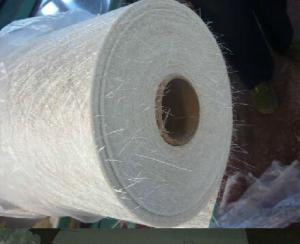When we talk about structural integrity, the conversation often revolves around materials that are strong, durable, and can withstand the test of time. One such material that has been making waves in the construction and engineering industries is fiberglass. But what exactly is fiberglass, and how does it contribute to enhancing structural integrity? Let’s dive in and explore the world of fiberglass and its meshing capabilities.
The Wonders of Fiberglass
Fiberglass, also known as glass-reinforced plastic, is a composite material made of a plastic matrix reinforced by fine fibers of glass. It’s lightweight, strong, and incredibly versatile, making it a popular choice for various applications. From boats to cars, and even in the construction of buildings, fiberglass has proven its worth time and time again.
A Strong Bond
The secret to fiberglass’s strength lies in its bond with the plastic matrix. The fibers are embedded in the plastic, creating a strong and stable structure. This bond is what gives fiberglass its incredible tensile strength and resistance to various environmental factors. It’s this very bond that makes fiberglass an ideal candidate for enhancing structural integrity.
Meshing with Fiberglass
Now, let’s talk about meshing with fiberglass. Meshing is the process of combining materials to create a unified structure. When fiberglass is meshed with other materials, it can significantly improve the overall strength and durability of the structure. This is particularly useful in areas where high strength and resistance to corrosion are required.
Applications in Construction
In the construction industry, fiberglass is often used in the reinforcement of concrete structures. It’s lightweight nature makes it easy to handle and install, while its high strength ensures that the reinforced concrete can withstand heavy loads. Fiberglass mesh is also used in the creation of composite materials for roofing, flooring, and cladding, providing a durable and long-lasting solution.
In the Automotive Industry
The automotive industry has also embraced fiberglass for its lightweight and high-strength properties. It’s used in the production of car bodies, hoods, and other components that require a balance of strength and weight. Fiberglass is also used in the creation of sports cars and racing vehicles, where performance and speed are of the essence.
Boat Building
When it comes to boat building, fiberglass is a go-to material. Its resistance to water, corrosion, and impact makes it perfect for marine applications. Fiberglass boats are not only strong but also lightweight, allowing for better fuel efficiency and performance on the water.
Aesthetic Appeal
Fiberglass isn’t just about functionality; it also has an aesthetic appeal. It can be molded into various shapes and forms, making it a favorite among designers and architects. From sleek curves to intricate patterns, fiberglass offers endless possibilities for creative expression.
The Future of Fiberglass
As we look to the future, the use of fiberglass in enhancing structural integrity will only continue to grow. With advancements in technology and materials, we can expect to see even stronger and more versatile applications of fiberglass in various industries.
In Conclusion
Fiberglass has truly revolutionized the way we approach structural integrity. Its unique properties and ability to mesh with various materials make it an invaluable asset in construction, automotive, and marine industries. As we continue to explore and innovate, the potential of fiberglass is limitless. So, the next time you see a structure made with fiberglass, take a moment to appreciate the strength and beauty it brings to our world.

